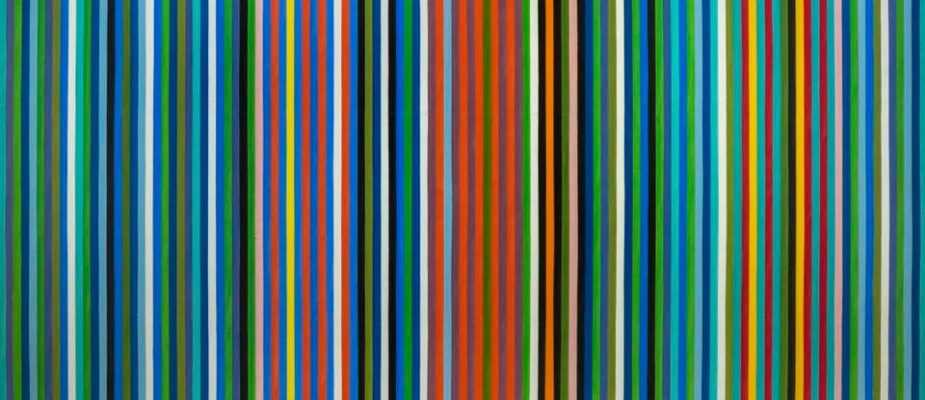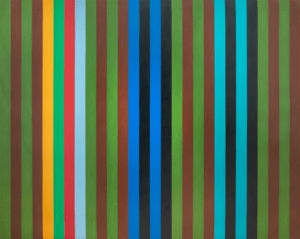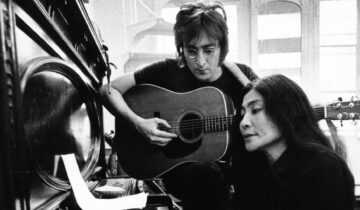Materials:
- Canvas or thick watercolor paper (any size will work)
- Painter’s tape (masking tape will work on canvas, but will be too sticky for paper)
- Red, yellow, blue, black, and white acrylic or tempera paints
- Paintbrush
- Container for water
- Paper towel or rag
- Apron or old clothes (acrylic paints will stain clothing)
Optional:
- Music that inspires you while painting
Gene Davis was born in 1920 in Washington, DC. He worked as a sportswriter and White House correspondent before he made his first painting at the age of 29. He had no formal training as an artist, but he eventually started creating stripe paintings like the ones shown above and below in the late 1950s. He wanted to experiment with color without any people, places, or things to distract the viewer from how the colors create patterns and rhythms. Rhythm in music is the beat or the way the music moves. Similarly, in art, rhythm is the repetition of lines, shapes, colors, brush strokes, etc. that suggests movement and guides the viewer’s eye through the work of art. What happens when you place one color next to another? Can you create a rhythm with color? Look at these works closely. Then, take a step back. Do you notice a rhythm? In other words, do you find your eyes moving in a certain direction or jumping around? Do you find yourself looking for patterns?
These paintings are called Cool Staccato and Autumn Largo, respectively. The first word in each title refers to the types of colors used—colors seen in autumn and cool colors (here’s a great color wheel for more information). The second word in each title might be familiar to those who play musical instruments. Largo means slow, smooth, and dignified. This word tells a musician how to play a piece of music. Staccato is a word that means to play each note short and choppy (think of notes being plucked on a violin instead of played with a bow).
Let’s create a work of art in the style of Gene Davis. Use tape to create stripes on your paper or canvas. Will you make wide stripes like Autumn Largo or thin stripes like Cool Staccato? Now, think about the mood you’d like to create—is it happy and bright or dark and somber? If you’re listening to music, this might affect the mood of your painting. Choose a color for each stripe carefully. You can use the primary colors with black and white to create any color! (Hint: always start with the lighter color and add tiny bits of a darker color to prevent making too much of a single color of paint). If you’re not sure how to make a color, use the color wheel in the link above to help. After you have painted all of the stripes, carefully remove the tape. Let the paint dry. When dry, place tape along the edges of the stripes you have already painted. It’s time to paint the remaining stripes. Remove tape when finished and display! How is the mood and rhythm of your painting different from Gene Davis’ paintings? How are they the same? Share your images with us at #OKCMOAathome!
The Museum relies on admission revenue from our galleries and films as well as donations to provide rich cultural and educational experiences for all. Please consider making a gift of any size to support the Museum as our community continues to shelter in place.
Credits: Gene Davis (American, 1920–1985). Cool Staccato, 1964. Acrylic on canvas. Oklahoma City Museum of Art. Museum purchase, Washington Gallery of Modern Art Collection, 1968.134. Gene Davis (American, 1920–1985) Autumn Largo, 1963, Acrylic on canvas, 89 1/4 x 112 3/8 in. Oklahoma City Museum of Art, Museum purchase, Washington Gallery of Modern Art Collection, 1968.133














